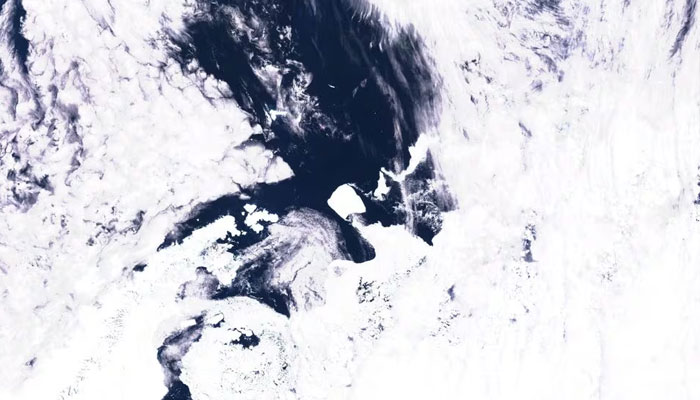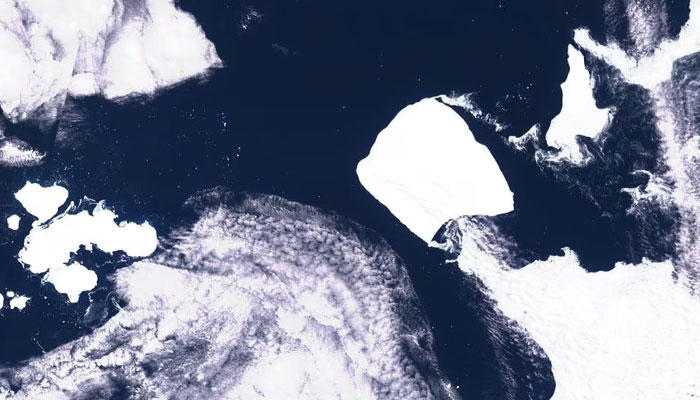World's biggest icy giant A23a sets sail towards southern ocean
Measuring almost 4,000 square-km, A23a is approximately three times the size of New York City
Breaking free from its stationary state of over three decades, the colossal Antarctic iceberg known as A23a is making a remarkable journey towards the Southern Ocean.
With a sprawling expanse of almost 4,000 square km, roughly three times the size of New York City, this monumental iceberg had been stranded since calving off West Antarctica's Filchner-Ronne Ice Shelf in 1986.
Recent satellite observations show A23a swiftly drifting past the northern tip of the Antarctic Peninsula, driven by formidable winds and ocean currents.
Notably infrequent, the movement of an iceberg of this magnitude has captivated scientists, prompting close monitoring of its trajectory. As A23a gains momentum, it is anticipated to enter the Antarctic Circumpolar Current, propelling it along "iceberg alley" towards the Southern Ocean, where similar ice formations are commonly found.
The reason behind A23a's sudden departure from its stationary state remains a puzzle. Glaciologist Oliver Marsh suggests that gradual thinning over time may have granted the iceberg additional buoyancy, allowing it to lift off the ocean floor and be propelled by currents. A23a also holds the distinction of being among the world's oldest icebergs.
There is speculation that A23a might encounter grounding again, potentially at South Georgia Island, posing challenges for the local wildlife. With millions of seals, penguins, and seabirds relying on the region for breeding and foraging, the colossal iceberg could disrupt their access.
While there's a possibility of A23a breaking into smaller pieces, akin to its predecessor A68 in 2020, concerns persist due to its sheer scale, raising questions about its potential impact on shipping routes as it ventures northward in the Southern Ocean.
-
'Who's it?' Late-night doorbell prank mystery ends with bizarre twist
-
When blue met green: Jaybirds create a one-of-a-kind hybrid
-
Australian scientists grapple with 'despicable' butterfly heist
-
Floods from Koh-e-Suleman bring 2,000-year-old coins to Punjab
-
Octopus boom triggers ‘perfect storm’ for Britain’s shellfish trade
-
Cambridge can’t escape ‘skibidi’ as Gen Z slang adds 6,000 fresh entries
-
Italian Brainrot: The AI memes only kids know
-
Nasa's Curiosity rover discovers coral-like rock on Mars













